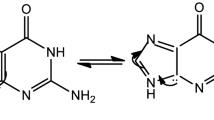Abstract
The influence of biologically relevant anions (succinate, acetate, citrate, chloride, bicarbonate, hydroorthophosphate, dihydroorthophosphate, nitrite, nitrate) on the formation of hydrogen peroxide and hydroxyl radicals in water was studied under the effect of non-ionizing radiation: heat, laser light with a wavelength of 632.8 nm, corresponding to the maximum absorption of molecular oxygen, and electromagnetic radiation of extremely high frequencies. It has been established that various anions may both inhibit the formation of reactive oxygen species and increase it. Bicarbonate and sulfate anions included in the biological fluids and medicinal mineral waters have significant, but opposite effects on reactive oxygen species production. Different molecular mechanisms of reactive oxygen species formation are considered under the action of the investigated physical factors involving these anions, which may influence the biological processes by signal-regulatory manner and provide a healing effect in physical therapy.
Similar content being viewed by others
References
N. K. Zenkov, V. Z. Lankin, and E. B. Men’shchikova, Oxidative Stress: Biochemical and Pathophysiological Aspects (MAIK Nauka/Interperiodica, Moscow, 2001) [in Russian].
V. I. Bruskov, O. E. Karp, S. A. Garmash, et al., Free Radic. Res. 46, 1280 (2012).
V. I. Bruskov, N. R. Popova, V. E. Ivanov, et al., Biochem. Biophys. Res. Commun. 443, 957 (2014).
V. Voeikov, Rivista Biol. 94, 237 (2001).
M. Schieber and N. S. Chandel, Curr. Biol. 24, R453 (2014).
V. I. Bruskov, L. V. Malakhova, Z. K. Masalimov, et al., Nucl. Acids Res. 30, 1354 (2002).
V. I. Bruskov A. V. Chernikov, S. V. Gudkov, and Zh. K. Masalimov, Biofizika 48, 1022 (2003).
S. V. Gudkov, O. E. Karp, S. A. Garmash, et al., Biofizika 57, 5 (2012).
S. V. Gudkov, V. S. Smirnova, and V. I. Bruskov, Voda. Khimiya i Ekologiya, no. 8, 40 (2010).
S. V. Gudkov, V. I. Bruskov, M. E. Astashev, et al., J. Phys. Chem. B. 115, 7693 (2011).
O. Yu. Gudkova, S. V. Gudkov, A. B. Gapeev, et al., Biophysics 50, 773 (2005).
A. R. Bowie, D. J. Whitworth, E. P. Achterberg, et al., Deep Sea Res. Part I 49, 605 (2002).
A. G. Ginetsinskii, Nefrologiya Dializ 1, 15 (1999).
R. Horn, Sea Chemistry (Structure of Water and Chemistry of Hydrosphere) (Mir, Moscow, 1972) [in Russian].
R. Schmidt and G. Tews, Human Physiology (Mir, Moscow, 1996), vol. 2 [in Russian].
A. V. Chernikov, V. I. Bruskov and S. V. Gudkov, J. Biol. Phys. 39, 687 (2013).
J. L. Parker and S. Newstead, Nature 507, 68 (2014).
D. Nelson and M. Cox, Bases of Lehninger’s Biochemistry (Binom, Moscow, 2014) [in Russian].
V. I. Bruskov, S. V. Gudkov, S. F. Chalkin, et al., Dokl. RAN 425, 827 (2009).
N. P. Popova, S. V. Gudkov, and V. I. Bruskov, Radiats. Biol. Radioekol. 54, 38 (2014).
I. N. Shtarkman, S. V. Gudkov, A. V. Chernikov, et al., Biokhimiya 73, 576 (2008).
G. V. Andrievsky, V. I. Bruskov, A. A. Tykhomyrov, et al., Free Radic. Biol. Med. 47, 786 (2009).
I. N. Shtarkman, S. V. Gudkov, A. V. Chernikov, and V. I. Bruskov, Biofizika 53, 5 (2008).
A. I. Miroshnikov, Biofizika 43, 1032 (1998).
Yu. A. Vladimirov and A. Ya. Potapenko, Physicochemical Bases of Photobiological Processes (Drofa, Moscow, 2006) [in Russian].
A. I. Zhuravlev, A. S. Belanovskii, V. E. Novikov, et al., Bases of Physics and Biophysics (Mir, Moscow, 2005) [in Russian].
C. L. Hawkin and M. J. Davies, Biochem. Biophys. Acta 1504, 196 (2001).
S. Benedetti, F. Benvenuti, G. Nappi, et al., Eur. J. Clin. Nutr. 63, 106 (2009).
Yu. N. Korolev, L. F. Kurilo, M. S. Geniatulina, et al., Probl. Reproduktsii 6, 16 (2003).
Yu. N. Korolev, M. S. Geniatulina, L. A. Nikulina, et al., Vopr. Kurortol. Fizioterap. Lecheb, Fiz. Kul’tury 6, 25 (2003).
V. Shafirovich, A. Dourandin, W. Huang, et al., J. Biol. Chem. 276, 24621 (2001).
V. L. Voeikov, N. D. Vilenskaya, Kh. Do Min, et al., Zh. Fiz. Khimii 86, 1518 (2012).
N. V. Goncharova, R. N. Ivanovskii, and L. V. Filatova, Biofizika 47, 490 (2002).
M. R. Mcllivin and M. A. Altabet, Anal. Chem. 77, 5589 (2005).
S. V. Gudkov, A. V. Chernikov, and V. I. Bruskov, Voda. Khimiya i Ekologiya 65, 88 (2013).
T. A. Lozinova and A. V. Lander, Biofizika 58, 445 (2013).
M. Shirom and G. Stein, J. Chem. Phys. 55, 3372 (1971).
G. W. Swenson, E. F. Zwicker, and L. I. Grossweiner, Science 141, 1042 (1963).
M. S. Metheson, W. A. Mulac, and J. Rabani, J. Phys. Chem. 67, 2613 (1963).
I. T. Gonorovskii, Yu. P. Nazarenko, and E. F. Nekryach, Brief Reference in Chemistry (Izd. AN USSR, Kiev, 1962) [in Russian].
N. F. Bunkin, N. V. Suyazov, A. V. Shkirin, et al., J. Chem. Phys. 130, 134308 (2009).
N. F. Bunkin, S. O. Yurchenko, N. V. Suyazov, et al., J. Biol. Phys. 38, 121 (2012).
N. V. Pen’kov, N. E. Shvirst, V. A. Yashin, et al., Biofizika 58, 942 (2013).
Author information
Authors and Affiliations
Corresponding author
Additional information
Original Russian Text © S.V. Gudkov, V.E. Ivanov, O.E. Karp, A.V. Chernikov, K.N. Belosludtsev, A.G. Bobylev, M.E. Astashev, A.B. Gapeyev, V.I. Bruskov, 2014, published in Biofizika, 2014, Vol. 59, No. 5, pp. 862–870.
Rights and permissions
About this article
Cite this article
Gudkov, S.V., Ivanov, V.E., Karp, O.E. et al. Impact of biologically relevant anions on reactive oxygen species formation in water under the action of non-ionizing physical agents. BIOPHYSICS 59, 700–707 (2014). https://doi.org/10.1134/S000635091405008X
Received:
Published:
Issue Date:
DOI: https://doi.org/10.1134/S000635091405008X




